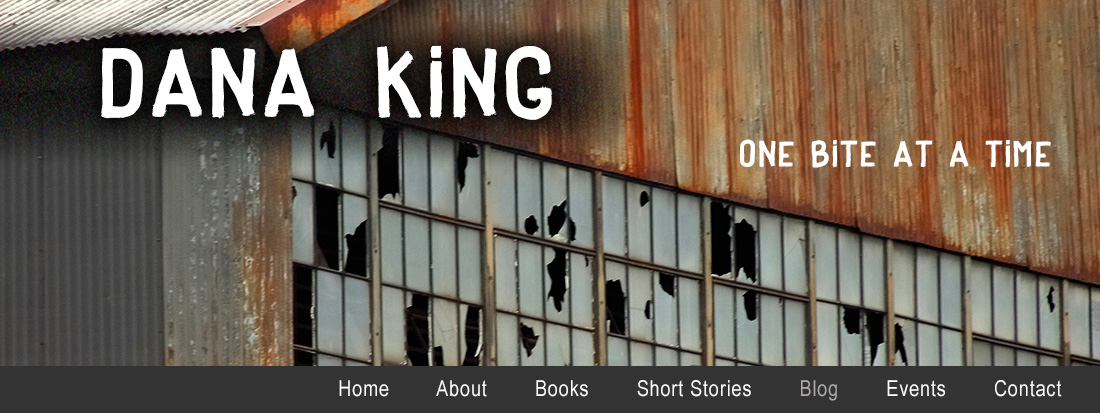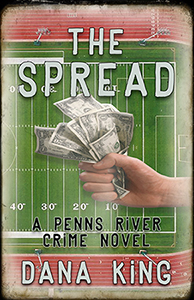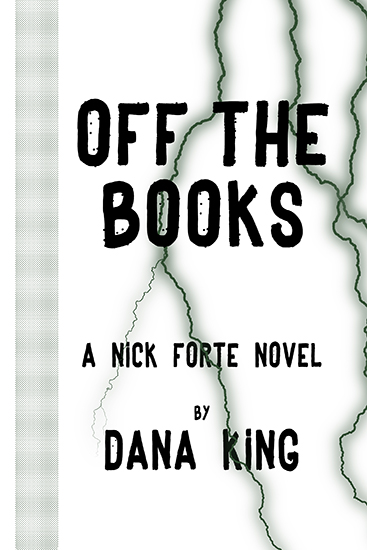 She’s the author of the Mistress of Fortune series, set in late 17th century London and featuring amateur sleuth Isabel Wilde, a mistress to King Charles II who secretly makes her living as a fortuneteller. Holly’s short stories appear in Feeding Kate: A Crime Fiction Anthology, Needle: A Magazine of Noir and Shotgun Honey Presents: Both Barrels.
She’s the author of the Mistress of Fortune series, set in late 17th century London and featuring amateur sleuth Isabel Wilde, a mistress to King Charles II who secretly makes her living as a fortuneteller. Holly’s short stories appear in Feeding Kate: A Crime Fiction Anthology, Needle: A Magazine of Noir and Shotgun Honey Presents: Both Barrels. Before devoting herself to writing fiction full-time, Holly was an accomplished jewelry designer. She also served as a contributor to About.com for four years, writing about a variety of topics. Prior to that, she worked as a foreign credentials analyst and published monographs on the educational systems of Sudan, Zambia, and Afghanistan.
When Holly’s not wandering the captivating streets of 17th century London, she lives, reads, and writes in Los Angeles with her husband, Mick, and dog, Stella. She's a member of the Mystery Writers of America, Sisters in Crime, and International Thriller Writers, and is the Wednesday contributor to the Do Some Damage blog. (That’s right; tow posts in a row about DSD writers. I told you it ruled.)
 Holly’s first book, Mistress of Fortune, launches today, so congratulations are in order.
Holly’s first book, Mistress of Fortune, launches today, so congratulations are in order. One Bite at a Time: Tell us about Mistress of Fortune.
HW: Mistress of Fortune, my debut novel, features Isabel, Lady Wilde, a mistress to King Charles II who secretly makes her living as a fortuneteller named Mistress Ruby. Charlatans, rogues, villains, and swindlers lurk in every dark corner of the city, and Isabel concedes she is one of them. But hard experience has taught her that women have few enough advantages in this world, and her conscience does not often bother her.
Everything changes when a prominent London magistrate, Sir Edmund Godfrey, seeks her counsel and reveals his accidental involvement in a covert plot to murder the king. Shortly after his visit, her diary, the sole record of her illicit activities as a soothsayer, is stolen, and Isabel must locate it before anyone connects her to Mistress Ruby. When Sir Edmund's corpse is discovered a few days later with a page from her diary in his pocket, Isabel suspects whoever committed the murder also has her diary.
Unwilling to trust the investigation to a royal court infamous for its schemes and intrigues, she begins her own inquiry and learns that Sir Edmund's murder is only a small part of a conspiracy that leads all the way to the throne. As she delves deeper into the mystery, she realizes that her business is not the only thing at stake and if she doesn’t find Sir Edmund Godfrey's killer, not even the king will be able to save her.
Mistress of Fortune is really my homage to my favorite historical period, Restoration England. It may sound cliché, but it was the book I was born to write.
OBAAT: Where did you get this idea, and what made it worth developing for you? (Notice I didn’t ask “Where do you get your ideas?” I was careful to ask where you got this idea.)
HW: I wanted to write something set in Restoration London (1660-85), featuring King Charles II, and came upon a Wikipedia article about Sir Edmund Berry Godfrey, whose unsolved murder in 1678 was a major scandal of the time. I decided to attempt a fictional re-telling of his killing and its aftermath, solving the murder in the process.
OBAAT: How long did it take to write Mistress of Fortune, start to finish?
HW: In total, it took about five years to write and get it published.
OBAAT: What’s the back story on the main character or characters?
HW: My protagonist, Isabel Wilde, is loosely based on Aphra Behn, a successful female playwright of the time. One of the more interesting aspects of Behn’s history is that she worked as a spy for England during her youth. As a result of her service to the Crown, she incurred a large debt that Parliament subsequently refused to pay and spent a period of time in debtor’s prison. I incorporated both of these details into Isabel Wilde’s back story and used them to explain her unusual choice of profession; determined never to return to prison and unwilling to take on the more typical roles—wife, prostitute, chambermaid—available to women at the time, she convinces a notorious London astrologer to teach her the soothsayer trade.
OBAAT: In what time and place is Mistress of Fortune set? How important is the setting to the book as a whole?
HW: It’s set in late 17th century London. I’ve long been enamored of Restoration London and it was important to me that I bring it to life as vividly as possible. I’m not sure I succeeded entirely, but I’m pleased with the novel as a whole. It all came together—characters, plot, and setting-- so much better than I thought it would.
OBAAT: How did Mistress of Fortune come to be published?
HW: It took two full years to get it published. After completing what I thought was the final draft in 2011, I sent out an unsuccessful round of queries to agents. A few months into that process I revised it again and got a much better response. I knew I was close but there were still no offers of representation. I considered self-publishing then and hired a professional editor. Her comment upon reading and editing the manuscript was that even though self-publishing might net me more money, if I still wanted a traditional publishing deal, Mistress of Fortune could be the book to get me one. I decided that, for good or bad, I wouldn’t self-publish this book. I would either get a traditional deal or stick it in the proverbial desk drawer and start on the next book. After incorporating her edits, I did one last submission blitz. In Fall 2012, Carina Press, the digital-first imprint of Harlequin, ran a “contest” where they promised feedback on your manuscript within a short time frame—something like 4 weeks, which in the publishing industry is lightening speed. Angela James, the executive editor at Carina Press, made an offer on Mistress of Fortune a month later.
At the time Carina made the offer, I was unagented, but three agents had the manuscript. I let them know there was an offer on the table and I needed a response as soon as possible. Liz Kracht of Kimberley Cameron & Associates offered representation a few days later (which I accepted).
OBAAT: What kinds of stories do you like to read? Who are your favorite authors, in or out of that area?
HW: I like hardboiled and noir crime fiction. I like flawed characters, the darker the better. Favorite authors lately are Tana French, Lawrence Block, Sue Grafton, Lisa Lutz, Sara Gran, Hillary Davidson, Bill Loefhelm. It’s hard to name everybody I love, but these are all authors whose titles I buy, no questions asked, as soon as they’re available.
OBAAT: Who are your greatest influences?
HW: David Liss, Sue Grafton, Lawrence Block, Truman Capote, Erik Larson, Kathleen Winsor, and of course, Judy Blume. It all started with her.
OBAAT: Do you outline or fly by the seat of you pants? Do you even wear pants when you write?
HW: I write the most detailed outline I can. I’ll take a month to do it, if necessary, because in the end, knowing where I’m going helps to prevent writer’s block and ultimately saves time.
Unless pajamas or yoga pants count, I never wear pants when I write. In fact, I rarely wear pants at all.
OBAAT: Give us an idea of your process. Do you edit as you go? Throw anything into a first draft knowing the hard work is in the revisions? Something in between?
HW: After writing the outline, I write my first draft as quickly as possible. I try not to worry too much about the quality of the writing—I just want to get the story out. It makes editing that second draft kind of grueling, but ultimately, it works for me.
OBAAT: If you could give a novice writer a single piece of advice, what would it be?
HW: Don’t rush into self-publishing. Mind you---I’m totally in favor of self-publishing and will probably do it myself eventually. But Mistress of Fortune is a much better novel because I waited. As a debut author I needed to work out the kinks and having the professional help I got from editors was an important part of that process. Just keep that in mind. One thing I’ve learned in the last five years is that every author has their own path, dictated by their goals, their commitment to the work, and their patience.
OBAAT: Favorite activity when you’re not reading or writing.
HW: Cooking.
OBAAT: Which do you take to bed at night, the money earned or the good review?
HW: The money earned.
OBAAT: Would you stop writing if someone paid you enough money so you’d never have to work again, on the condition you could also never write again?
HW: No.
OBAAT: If you were just starting out, which would you prefer: 1. Form your own indie publishing house and put your work out in paper and e-book yourself? 2. Go with a small or medium traditional house that offers very little or no advance, a royalty that is only a fraction of what you'd get on your own, and also makes no promise of any type of publicity push, keeping in mind that you also will lose the publishing rights for a period, sometimes indefinitely? 3. Go with a Big Six or legacy publisher that offers a larger advance, legitimate review possibilities, entrance to industry literary awards, and exposure on the shelves of brick and mortar stores. Pick one and say why.
HW: This is such an interesting question because my current publishing deal with Carina Press is essentially the same as option #2 (although Carina is an imprint of Harlequin, a big publisher). So, based on what I’ve explained above, it would seem that #2 would be my choice. But #2 was not my ideal (not at all), it was my choice dictated by the options available to me at the time and what my publishing goals were at the time (to be “traditionally” published). My ideal would be #3 because that was my dream from a young age and still is.
All of that said, I’m intrigued by option #1 and hope to self-publish a series (probably novellas) in just that way. I’d like to have something that belongs just to me and no one else—despite the choices I’ve made in my publishing career thus far, that’s important to me. I’m not quite ready for that yet but I’m excited about the prospect.
OBAAT: Beer, mixed drinks, or hard liquor?
HW: Wine
OBAAT: Baseball or football?
HW: Baseball
OBAAT: What question have you always wanted an interviewer to ask, but they never do?
HW: Who is your favorite Bee Gee?
OBAAT: What’s the answer?
HW: Barry, of course.
OBAAT: What are you working on now?
HW: Mistress of Lies, the second novel in the Mistress of Fortune Series, is in edits now. It’ll be published by Carina Press in Fall 2014.
Many thanks to Holly, whose web site has a wealth of information on her and her books; the FAQ page is particularly entertaining and enlightening. Mistress of Fortune is available on Amazon today.




1 comment:
Thank you so much for inviting me to participate, Dana. Great questions, too!
Post a Comment